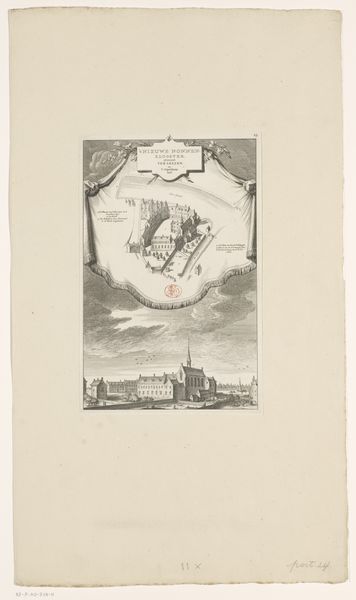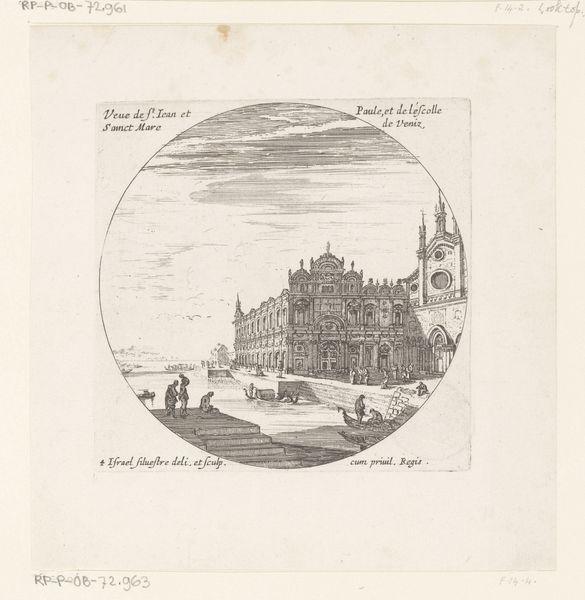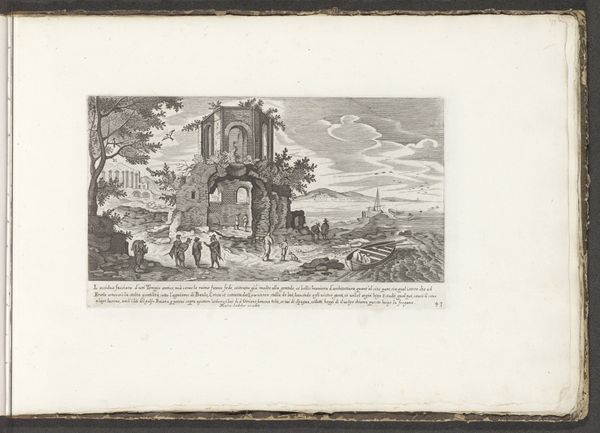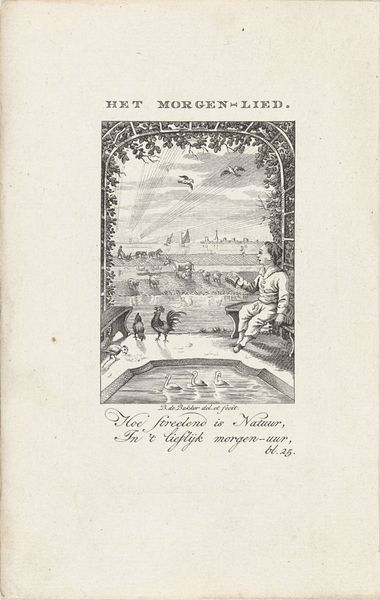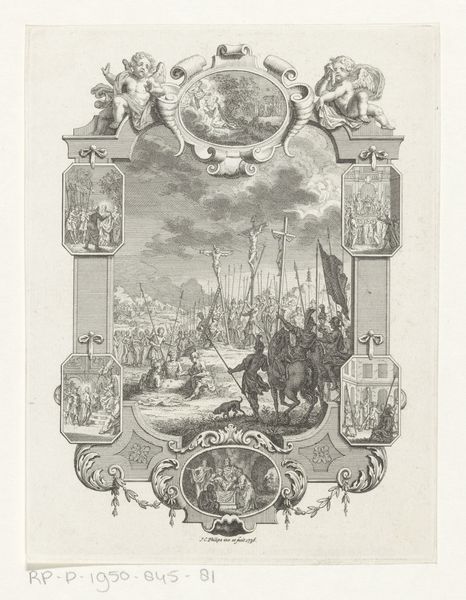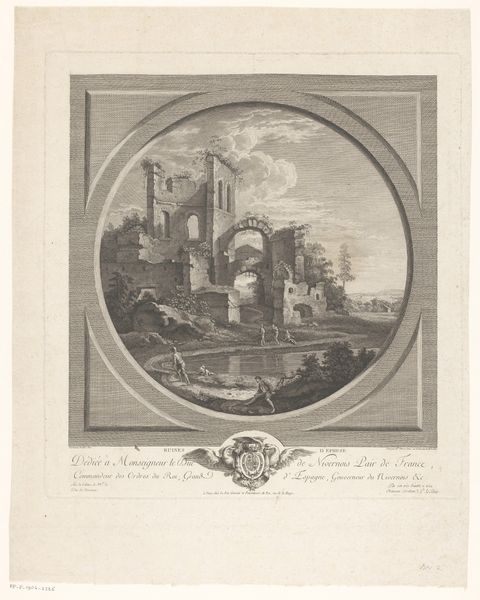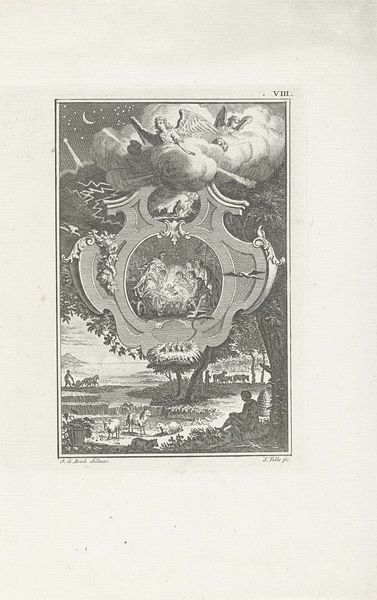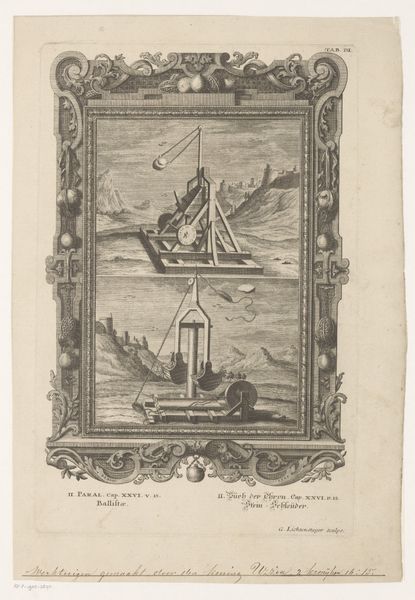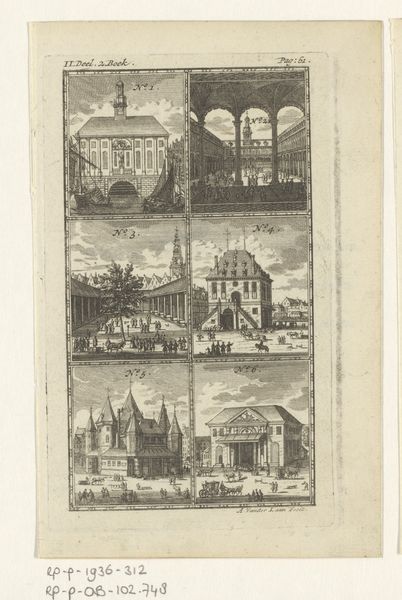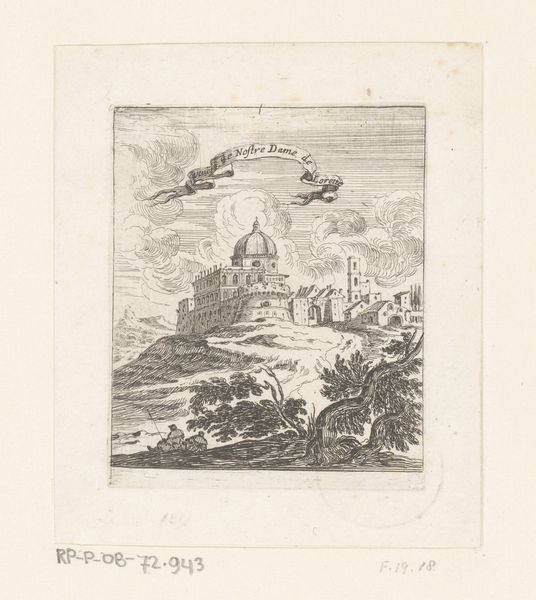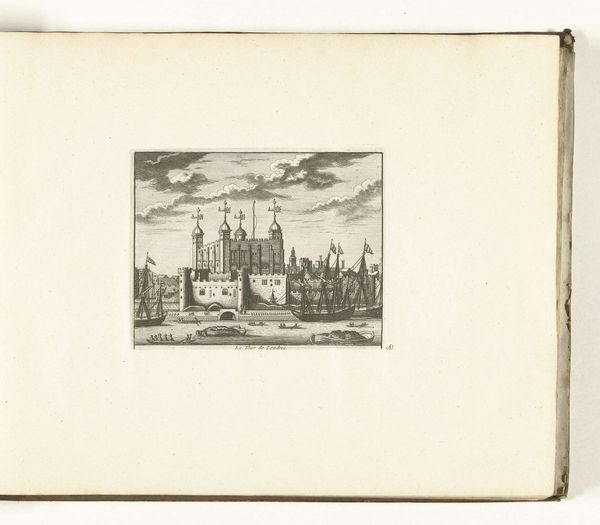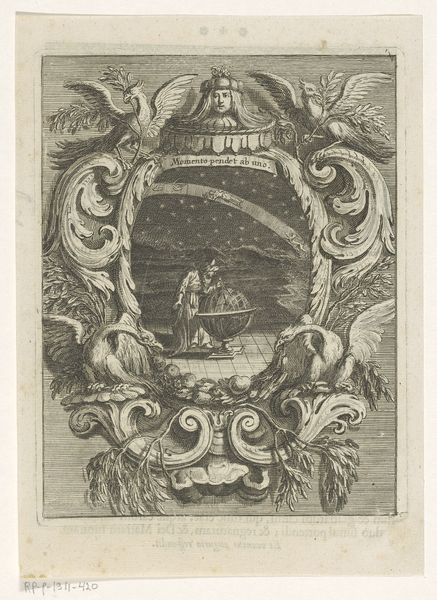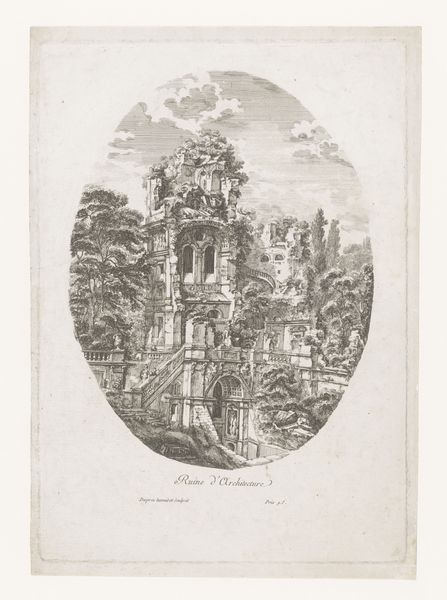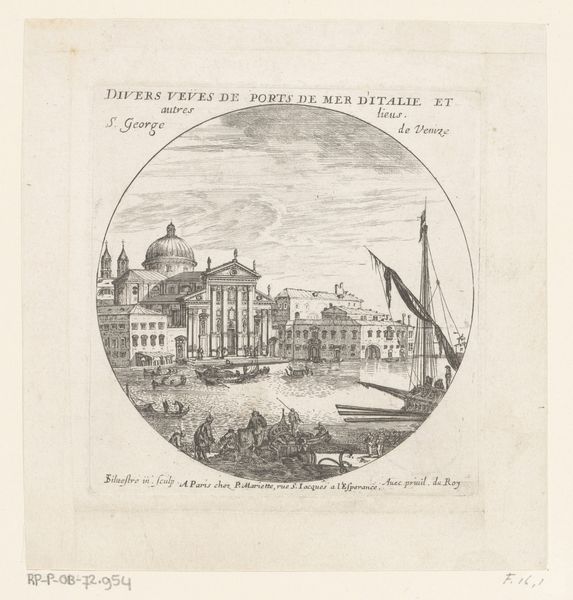
print, engraving, architecture
#
baroque
#
dutch-golden-age
# print
#
cityscape
#
engraving
#
architecture
#
building
Dimensions: height 267 mm, width 174 mm
Copyright: Rijks Museum: Open Domain
Curator: Looking at this engraving by Jan Goeree, dating back to 1760, we see "Twee gezichten op de Kloveniersdoelen in Amsterdam," which translates to "Two views of the Civic Guard shooting range in Amsterdam." Editor: It’s striking, this piece. A building appears twice, presented in a cloud-like vision floating above its grounded counterpart, and a quaint scene is meticulously etched below. The contrasts invite the eye to decode something deeper about the architecture. Curator: Exactly. Focusing on the formal composition, consider how Goeree uses the upper scene, almost ethereal, to possibly suggest memory or the idealised past versus the depiction of reality in the more detailed view below. Note the ornate frame around the upper view that emphasizes this separation, what message might it encode? Editor: I think it speaks directly to the building's evolving function in Amsterdam’s socio-political theatre. Shooting ranges, like this Kloveniersdoelen, were important municipal centres—places to flaunt civic pride and masculine military prowess. By 1760, were these civic guard functions themselves fading into "memory" only? Curator: An interesting perspective. I am seeing instead a very careful approach to creating texture. Goeree really explores linear hatching and how strategic placements help sculpt light and shadow to define form and three-dimensional spaces. The formal qualities become almost abstracted depending on where your gaze focuses in the overall plane. Editor: Perhaps Goeree means to show Amsterdam itself transforming? Here, architecture serves to physically embody and publicly stage shifts in the cultural narrative. I find it curious too that so many tiny human figures pepper the base cityscape at river level: all of them witness the landmark—participants in how this monument shapes city life and how this public space plays out in 18th-century Amsterdam. Curator: So, from line and form to civic life… We've seen how seemingly simple lines can construct multiple dialogues. It comes alive from an array of different standpoints. Editor: A dual narrative held together by skillful engraving—truly evocative. The artist prompts us to re-evaluate public symbols amidst change.
Comments
No comments
Be the first to comment and join the conversation on the ultimate creative platform.
